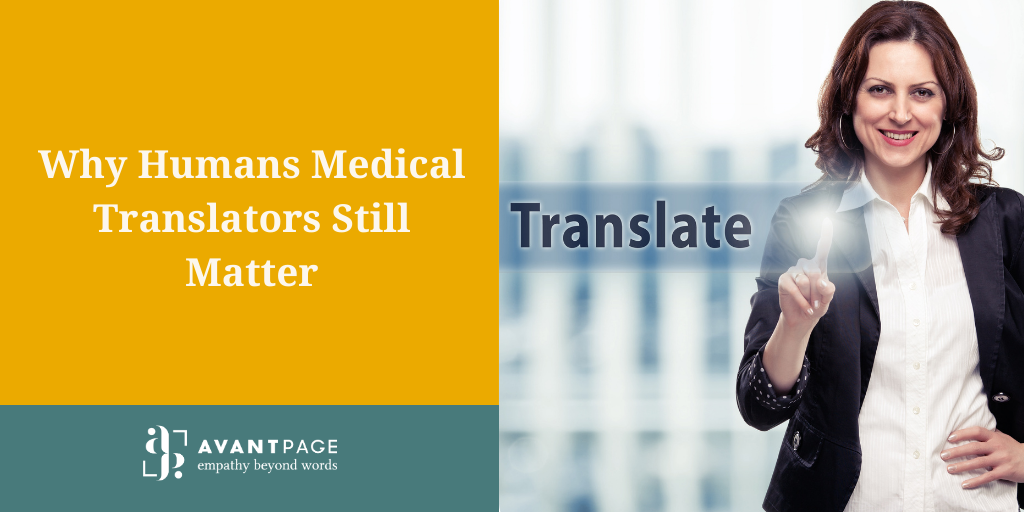Machine translation offers a fast, affordable way to translate web content. In fact, Google Translate provides instantaneous translations in over 100 languages—for free. Yet before you copy and paste your medical content, we recommend weighing the pros and cons of forgoing the services of a professional translator. In this article, we’ll explore the differences between the two methods, and help you decide which is right for your project.
Machine Translation vs. Human Translation
Machine translation, not to be confused with Computer-assisted translation (CAT), is a method of automated translation. Artificial intelligence software that has been trained to understand natural languages can translate one language into another. It’s faster, more affordable, and easier to scale than human translation. Yet it still has a lower rate of accuracy and lacks one essential skill: the ability to determine context.
Machine Translation works best for projects that:
- Don’t require a high degree of accuracy.
- Don’t require nuance or cultural understanding.
- Aren’t creative in nature.
- Are basic guidelines or instructions
Human medical translators, on the other hand, have an in-depth knowledge of the nuances and cultural differences between the languages they translate. However, human translation is costlier and takes longer. Although translators use CAT tools to help them work faster, they can’t compete with machines in that arena.
Which Method Is Best for Medical Translations?
Given that they require a higher degree of accuracy, human translation is typically best. While machine translation can produce grammatically correct content, it can’t take into account how a reader will interpret it.

Translation on Virginia Department of Health’s website told Spanish-readers they didn’t need the COVID-19 vaccine
Here’s an example. A Google generated Spanish translation of the Virginia Department of Health’s website told visitors that the Coronavirus vaccine “no es necesario”, or is not necessary. The health department wanted to make it clear that the vaccine isn’t mandatory.
Yet visitors could misinterpret it to mean that Latinos don’t need the vaccine, despite being part of a high-risk group.
Machine Translations and Human Post-Editing
Whether you have a need for scalability or lack the budget, machine translation combined with human post-editing can serve as an alternative to human translation. Some languages services companies provide post-editing services that will ensure your translation is linguistically accurate and culturally appropriate.
Internal bilingual staff can also perform the task. Here’s how:
• Read a sentence or segment of the machine translated content.
• Compare the output to the source text.
• Make improvements to the text, if the output is of a high enough quality.
• Delete the sentence or segment if it’s of poor quality, and re-translate it.
While this does add an extra step to your project, it will greatly improve the accuracy.
Working with Avantpage
If you need to hire a professional translator, we recommend working with a language services company that specializes in healthcare. At Avantpage, we have over 20 years of experience translating materials for health plans, hospitals and clinics, life sciences, and more. We’ll help you build lasting relationships with limited English proficiency (LEP) communities by providing accurate, culturally-relevant website localization and translations.
Ready to discuss your next medical translation project? Contact us today to request your free quote!
